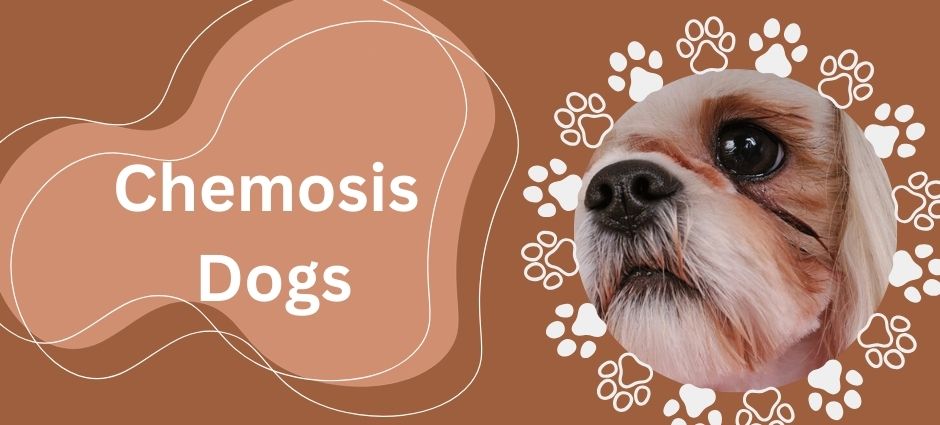Dogs are our loyal companions, always by our side with their wagging tails and loving eyes. But when those eyes start showing signs of discomfort or swelling, it’s a clear signal that something is amiss. One such condition that can affect our furry friends is a chemosis dog.
Understanding chemosis in dogs is crucial for ensuring their health and comfort.
Let’s dive into what chemosis is, its causes, symptoms, treatment options, and prevention tips.
What are Chemosis Dogs?
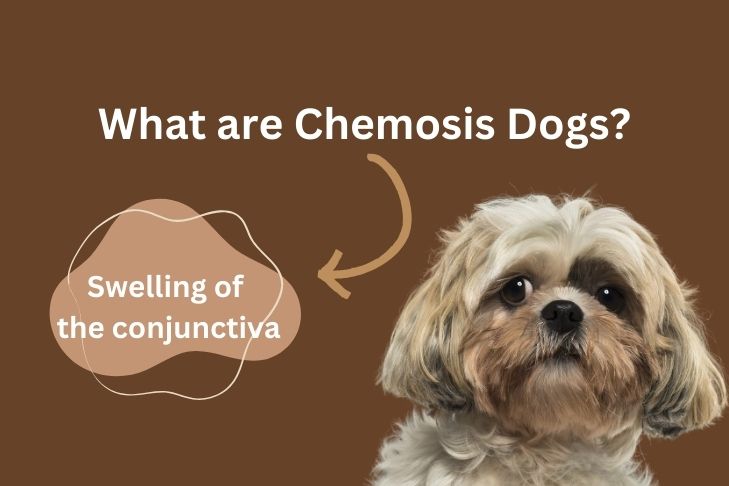
Chemosis is nothing but the swelling of the conjunctiva, which is a thin, transparent membrane covering the white part of a dog’s eyes. It is the lining of the inner eyelid.
When this membrane becomes inflamed or irritated, it can swell and look quite alarming. In severe cases, the swollen conjunctiva can protrude from the eye, causing significant discomfort for the dog.
Causes of Chemosis Dogs
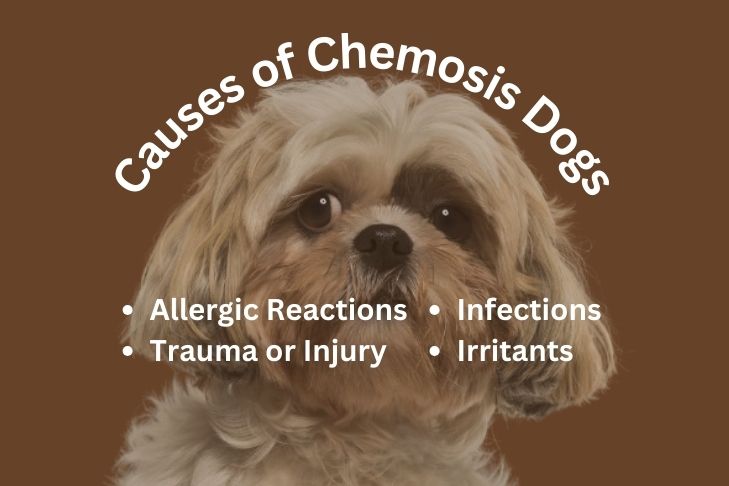
There are several reasons why a dog might develop chemosis. Finding out the root cause is very important to begin treatment. Here are some common causes in your chunky dog:
- Allergic Reactions: Just like humans, dogs can have allergic reactions to various environmental factors, such as pollen, dust, mold, or certain chemicals. These allergens usually cause the inner lining to burn and eventually swell up.
- Infections: Bacterial, viral, or fungal infections can lead to chemosis. Conjunctivitis, often referred to as pink eye, is a common infection that can cause chemosis in dogs.
- Trauma or Injury: Any injury or trauma to the eye, such as a scratch or foreign object, can result in inflammation and swelling of the conjunctiva.
- Irritants: Exposure to irritants like smoke, chemicals, or even certain grooming products can cause dog chemosis.
- Systemic Diseases: Some systemic diseases, such as autoimmune disorders or certain types of cancer, can manifest chemosis symptoms.
Read About: Chemotherapy in Dogs
Recognizing the Symptoms of Chemosis in Dogs
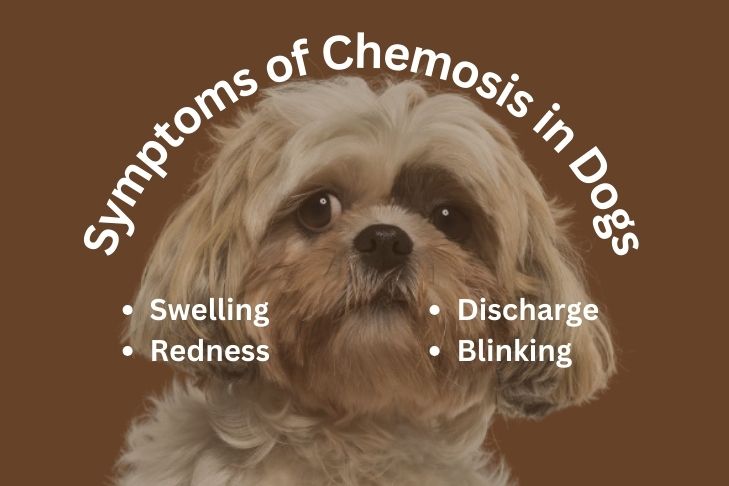
Chemosis dogs can be easily recognized due to their distinctive symptoms. If you notice any of the following signs, it’s important to consult with a veterinarian promptly:
- Swelling: The most apparent symptom is the swelling of the conjunctiva, which may be mild or severe.
- Redness: The conjunctiva often becomes red and inflamed.
- Discharge: There might be a clear or pus-like discharge from the eye.
- Squinting or Blinking: Dogs with chemosis may squint or blink frequently due to discomfort.
- Rubbing or Pawing at the Eye: Increased itching and irritation make the dog rub their eyes more, which further worsens the condition, so you want to avoid that.
Treatment Options for Chemosis Dogs
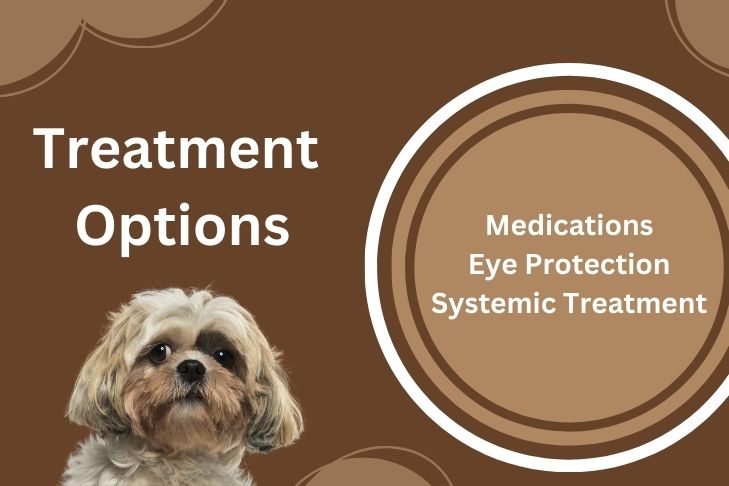
- Medications: For allergic reactions or infections, veterinarians may prescribe antihistamines, antibiotics, or antifungal medications. Anti-inflammatory eye drops or ointments can also help reduce swelling and discomfort.
- Elimination of Allergens or Irritants: If the chemosis is happening because of some allergy, then finding the allergen and removing it is very important.
- Eye Protection: In cases of trauma or injury, protecting the eye from further damage is essential. Your vet may recommend an E-collar so the dog can’t rub his eyes.
- Systemic Treatment: For chemosis caused by systemic diseases, treating the underlying condition is necessary. This might involve more extensive medical treatment and monitoring.
How to prevent Chemosis Dogs
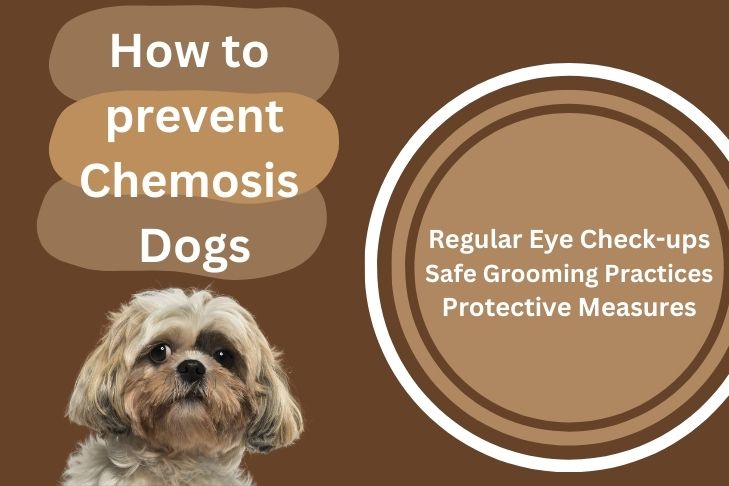
Prevention is always better than cure. While it may not be possible to prevent all cases of chemosis in big white dogs, there are steps you can take to reduce the risk:
- Regular Eye Check-ups: Make sure you are taking your dog for checkups regularly to spot diseases early.
- Maintain a Clean Environment: Keeping your dog’s living area clean and free of dust, pollen, and other allergens can minimize the risk of allergic reactions.
- Safe Grooming Practices: Use dog-friendly grooming products and avoid exposing your dog to harsh chemicals.
- Protective Measures: If your dog is prone to eye injuries, consider using protective eyewear during activities that could pose a risk.
- Monitor for Symptoms: Stay vigilant for any signs of eye discomfort or changes in your dog’s eyes, and seek veterinary care promptly if you notice any issues.
Conclusion
Chemosis dogs can be a worrying condition for dog lovers and owners, but with proper understanding and prompt veterinary care, it can be effectively managed. Always pay attention to your dog’s eyes and overall health, and don’t hesitate to consult your vet if you suspect chemosis or any other eye problem. Your vigilance and care can ensure that your furry friend remains healthy, happy, and comfortable.
By staying informed and proactive, you can help prevent and address chemosis in your dog, ensuring they continue to see the world clearly and enjoy all the wonderful moments of life by your side.



